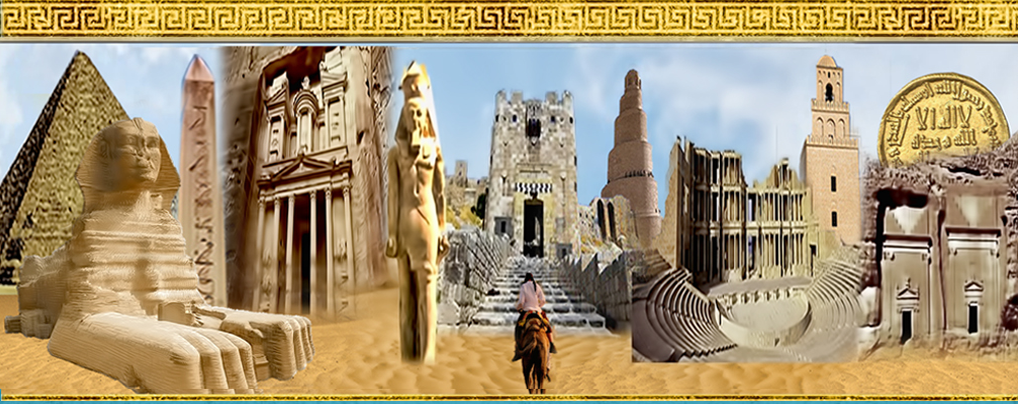Journal of the General Union of Arab Archaeologists

Abstract
أواني الريتون ما بين الفارسي واليوناني من خلال مقبرة بيتوزيريس بتونا الجبل دراسة تحليلية مقارنة [Ar]
يعد إناء الريتون من الأواني الهامة التي اسُتخدمت في الاحتفالات والطقوس الدينية كأواني لشرب الماء أو الخمر، ويرجع ظهورها إلي الربع الأخير من القرن الرابع قبل الميلاد في بلاد اليونان، حيث يذكر المؤرخ هيرودوت، بأن اليونانيين عثروا عقب الحروب الفارسية علي كثير من مقتنيات المعسكر الفارسي والتي كانت من بينها أواني الريتون. وتنقسم أواني الريتون من حيث الشكل إلي ثلاثة أنواع، النوع الأول: يتمثل في إناء الريتون المنحني ويكون فيه الإناء ذو قاعدة تُمثل الجزء السفلي من الإناء يعلوها رأس الحيوان التي تُمثل الجزء الأكبر من حجم الإناء أما الجزء العلوي، فيُمثل فوهة الإناء، بينما النوع الثاني: إناء الريتون ذو قرن الحيوان "البوق" حيث يتخذ الإناء الشكل المخروطي. ويتكون من جزئيين الجزء العلوي يتمثل في فوهة وبدن الإناء، والجزء السفلي يتمثل في قرني ورأس الحيوان، أما النوع الثالث: فيتمثل في إناء الريتون بهيئة رأس حيوان. وفي هذا النوع يتمثل الإناء في شكل قطعة واحدة فقط تتمثل في رأس الحيوان، و تناولت الدراسة وصف وتحليل مناظر تصوير إناء الريتون بمقبرة بيتوزيريس بتونا الجبل، متبعًا المنهج الوصفي والمقارن والتحليلي، خاتمًا الدراسة بالنتائج التي تضمنتها والتي كانت من بينها أمر ترجيح تأريخ مقبرة بيتوزيريس بناءً علي تصوير هذه الأواني بها إلي الفترة ما بين (517-460 ق.م)، أي من نهاية العصر الصاوي وحتي بداية العصر الفارسي الأول (العصر الأخميني).
[En] The Rhyton vessel is a drinking vessel used for ceremonial purposes. The significant Rhyton vessel is depicted on Petosiris’ tomb at Tuna El Jebel. This type of vessel became popular in Greece since the last quarter of the fourth century BC, after the Persian wars. Most of it was made of pottery rather than metal. According to the historian Herodotus, the Greeks captured many of the Persian camp's possessions after their victories, including the Rhyton vessels, a pottery vessel that had not before been used in Greece. Therefore, Persia could be where it first appeared. The Rhyton vessel comes in three different shapes; The first form is the curved Rhyton: This form of Rhyton vessel has a base that represents the lower part of the pot, ends in the forepart by an animal’s head, which represents the largest part of the pot, and an upper part represents its top. The second form is the horned Rhyton; This form of Rhyton vessels takes a conical shape, consisting of two parts. The upper part represents the mouth and body of the pot, while the horns and head of the animal represent the lower part since it resembles the trumpet instrument used in the horn. It was sometimes referred to as the «trumpet» instead of just the animal's horn. The Third Form is the Rhyton which is in the form of an animal head. Moreover, the third form is the Rhyton in the form of an animal head. This Rhyton vessel only consists of one piece represented by the animal's head. It was primarily used as a vessel for funeral rites and began to be produced during the first quarter of the fourth century AD. This paper describes and analyzes its depictions in the tomb of Petosiris in Tuna El Jebel. In order to complete the study, descriptive, comparative and analytic research methodologies are used.
Recommended Citation
Abd el Salam, Tony Taleb
(2024)
"THE RHYTON VESSEL OF PERSIAN AND GREEK ORIGINS IN THE LIGHT OF PETOSIRIS TOMB IN TUNA EL-GEBEL (COMPARATIVE AND ANALYTICAL STUDY),"
Journal of the General Union of Arab Archaeologists: Vol. 9:
Iss.
1, Article 4.
Available at:
https://digitalcommons.aaru.edu.jo/jguaa/vol9/iss1/4
Included in
Historic Preservation and Conservation Commons, History Commons, History of Art, Architecture, and Archaeology Commons

